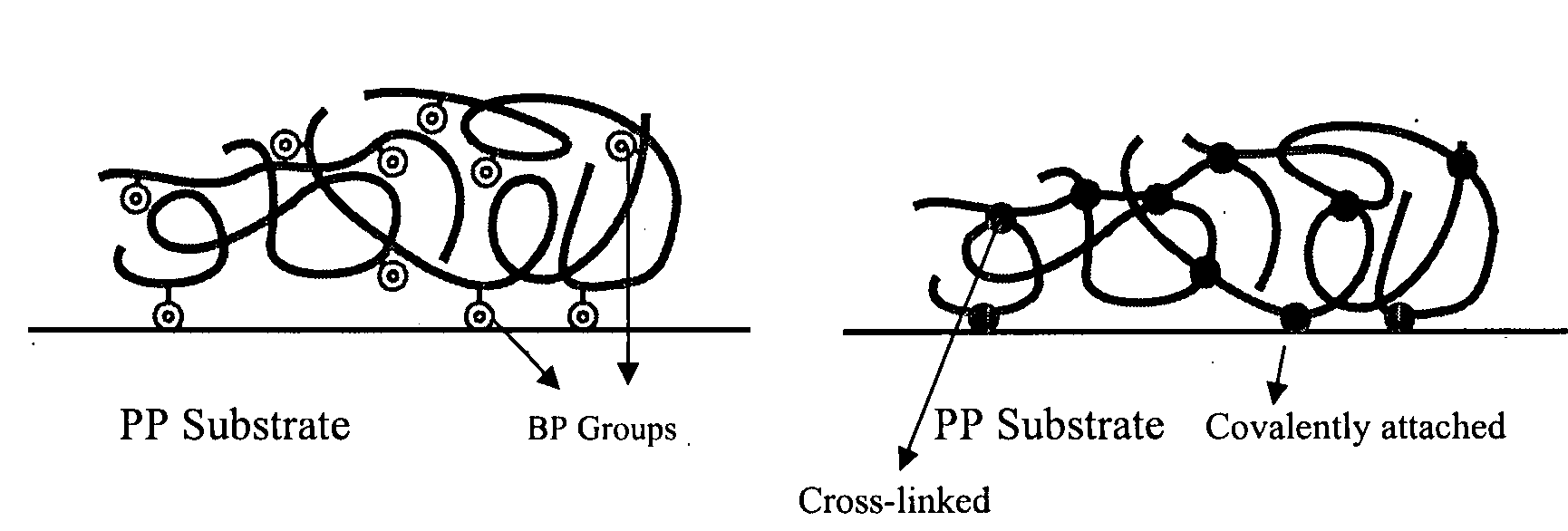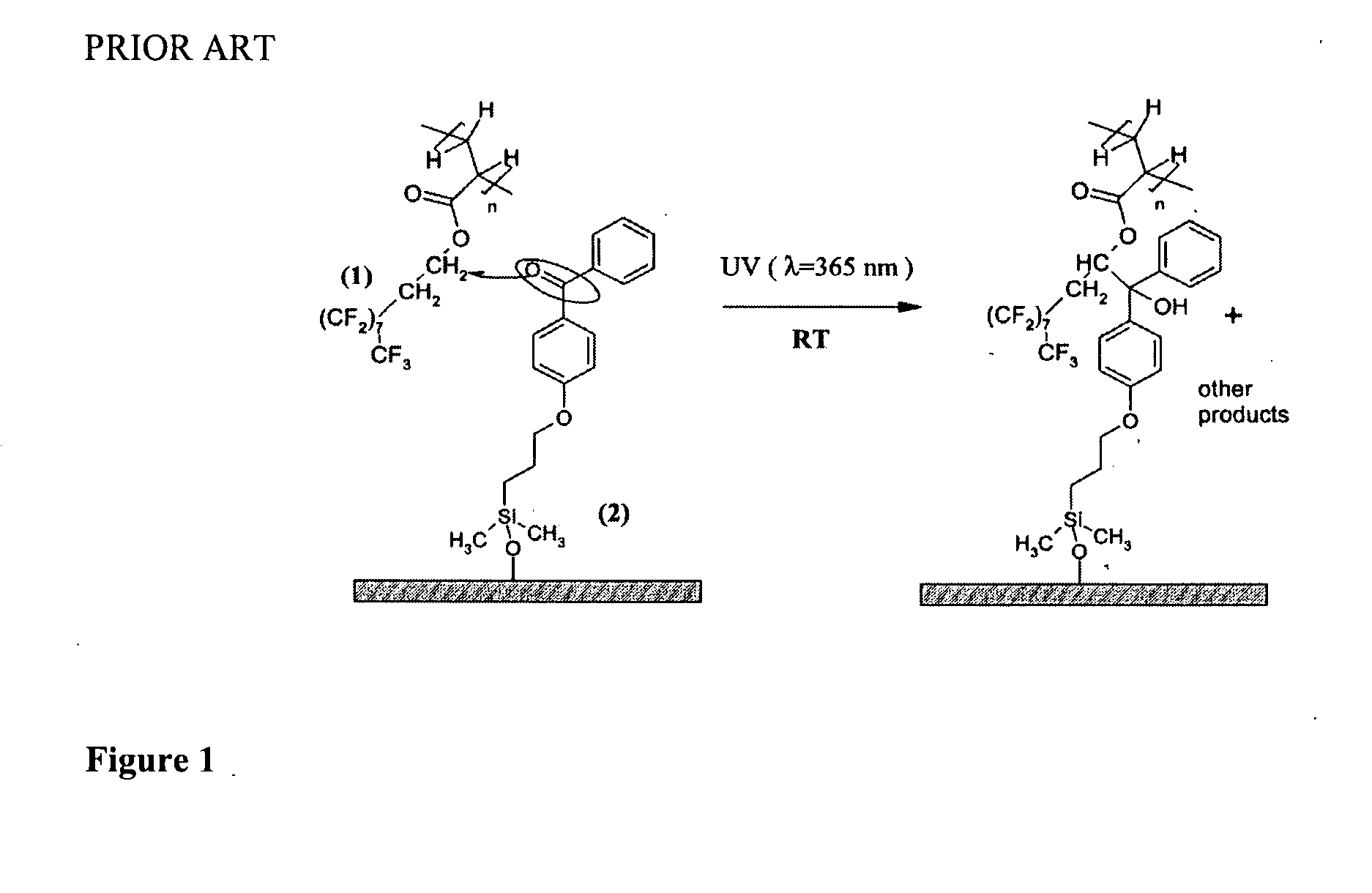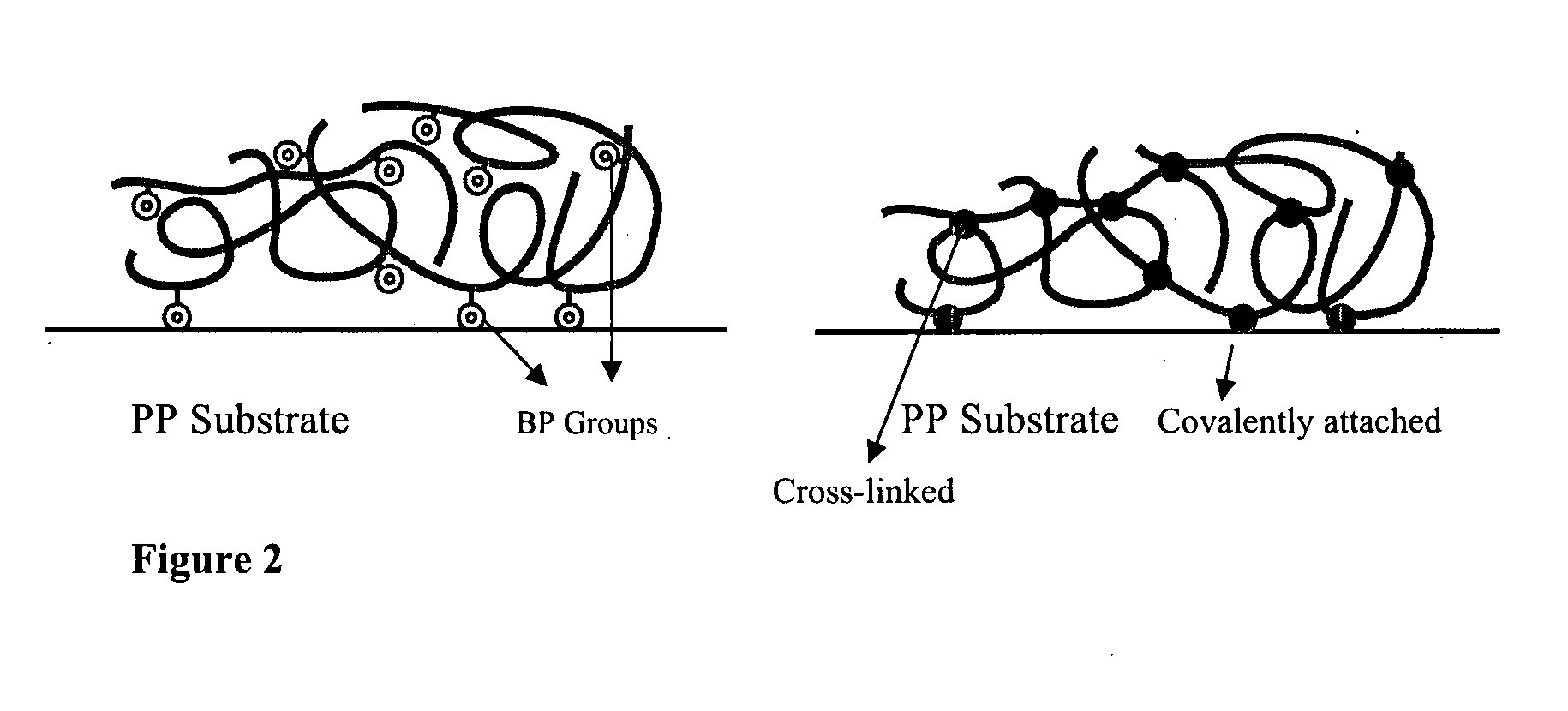Modification of surfaces with polymers
a technology of polymer and surface, applied in the direction of biocides, antifouling/underwater paints, coatings, etc., can solve the problems of complex and often difficult or cumbersome steps to provide desired functionalization, site specific functionalization may be difficult or impossible using such methods, and the coating resistance to abrasion and shock is not always attained
- Summary
- Abstract
- Description
- Claims
- Application Information
AI Technical Summary
Benefits of technology
Problems solved by technology
Method used
Image
Examples
experimental examples
[0151]Materials. Dimethylaminoethyl methacrylate (DMAEMA, Aldrich 99%) was passed through a basic alumina column before use. CuCl was obtained from Aldrich and purified by stirring in glacial acetic acid overnight, filtering, and washing with dry ethanol. The monomer, 4VP, was passed through a column filled with basic alumina prior to use in order to remove the polymerization inhibitor. The macroinitiator, poly(ethylene oxide) methyl ether 2-bromosiobutyrate (MePEOBiB; molecular weight 699 g / mol), and tris(2-pyridylmethyl)amine (TPMA) were prepared by literature procedures. 3-Trimethoxypropyl silane (98%), ethyl 2-bromoisobutyrate (EBriBu) (98%), CuCl2 (98%), 1,1,4,7,10,10-hexamethyltriethylenetetramine (HMTETA) (97%) were purchased from Aldrich and used without further purification however to remove oxygen from the macroinitiator and N,N,N′,N″,N′″,N′″-hexamethyldiethylenetriamine (HMTETA), 1-phenylethyl bromide (1-PhEtBr), 1-phenylethyl chloride (1-PhEtCl), and acetonitrile (MeCN) ...
example 1
Preparation and Use of an ATRP Initiator Further Comprising a Thermoresponsive Functional Group
[0155]This is an example of a simple robust procedure for attachment of initiating functionality to a polymer substrate for subsequent ATRP reactions. The fabrication approach is based on the photochemistry of benzophenone triggered by UV light (λ=365 nm). Benzophenone has a n-π* transition, resulting in the formation of a biradical triplet excited state that then abstracts a hydrogen atom from neighboring aliphatic C—H groups to form new C—C bond. Herein we use this photochemical technique to introduce benzophenonyl 2-bromoisobutyrate (BPBriBu, ATRP initiator) to a polymeric surface further comprising a radically transferable proton, such as polypropylene (PP) (see (a) of Schematic 3 above). The photoactive benzophenone functional groups in BPBriBu act as an anchor to promote the immobilization of the ATRP initiator by abstracting hydrogen from PP surfaces then forming C—C bonds. The teth...
example 2
ATRP of DMAEMA Initiated from PP Surface
[0163]ATRP of DMAEMA from the initiator attached PP surface was carried out in the presence of ethyl, 2-bromoisobutyrate (EBriBu) and CuCl / CuCl2 / 1,1,4,7,10,10-hexamethyltriethylenetetramine (HMTETA) as the sacrificial initiator and catalyst system, respectively (see (b) of Schematic 3). The addition of the sacrificial initiator led to the formation of free polymer, which was used to estimate the molecular weight characteristics of the obtained polymer chains on the surface, given that the similar structure of the chains at the surface and those in solution has been clearly demonstrated.
[0164]These polymerizations were well-controlled (see Table 1 below). Typical GPC profiles of samples taken during the polymerization (entry 4, Table 2) show that the molecular weight of the free polymer progressively increased and the polydispersity (PDI) remained relatively low during polymerization. The chain length of the polymer grafted on the surface was c...
PUM
| Property | Measurement | Unit |
|---|---|---|
| Volume | aaaaa | aaaaa |
| Volume | aaaaa | aaaaa |
| Volume | aaaaa | aaaaa |
Abstract
Description
Claims
Application Information
 Login to View More
Login to View More - R&D
- Intellectual Property
- Life Sciences
- Materials
- Tech Scout
- Unparalleled Data Quality
- Higher Quality Content
- 60% Fewer Hallucinations
Browse by: Latest US Patents, China's latest patents, Technical Efficacy Thesaurus, Application Domain, Technology Topic, Popular Technical Reports.
© 2025 PatSnap. All rights reserved.Legal|Privacy policy|Modern Slavery Act Transparency Statement|Sitemap|About US| Contact US: help@patsnap.com



